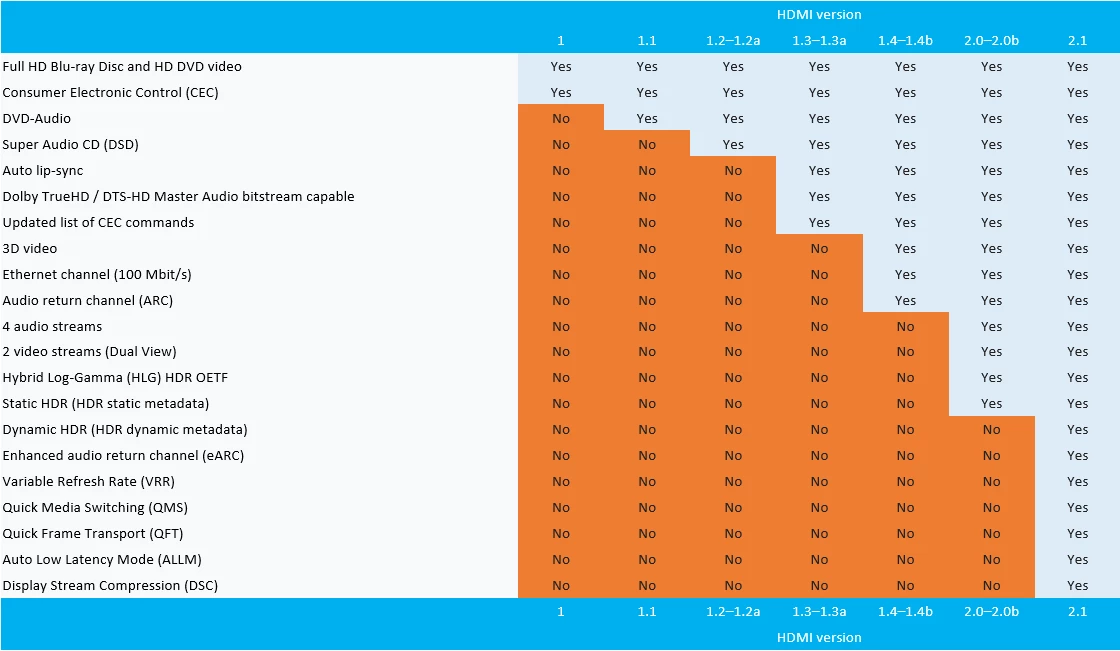The HDMI Forum's Technical Working Group has released the specs for HDMI 2.1, as well as a new Ultra High Speed HDMI cable. Some of the 2.1 spec's features will be backward compatible with your existing HDMI 2.0 cable, others will require you to upgrade.
High bandwidth content, resolutions and dynamic HDR
The new spec opens up super high bandwidth content like massive uncompressed 8K resolutions at a 60 Hz refresh rate, or 4K vision at 120 Hz. The total transfer rate jumps from 18 Gbps in the old spec to a whopping 48 Gbps in 2.1.
The spec supports higher resolutions as well – up to 10K/ at 120 Hz – but in order to fit that much data down the pipe, it applies a Display Stream Compression algorithm.

I don't hear a lot of people complaining about the low resolution and pixellation of their 4K TVs; this is more likely aimed at commercial massive-screen applications, as well as potential VR gear where images take up your entire field of vision and are split in half for stereoscopic view.

Depending on your resolution and frame rates, HDMI 2.1 also supports Dynamic HDR, which can display a wider range of colors and tones, and adjust each scene, or even each frame, for optimal depth, detail, brightness and contrast.
Refresh rate upgrades
There's some new features around refresh rates as well, which will be particularly interesting to gamers.
Variable Refresh Rate (VFR) can constantly change the refresh rate of a screen to match the video output device. That means that as your PC gaming rig's frame rate goes up and down, the screen syncs immediately to the current frame rate for the best possible smoothness. Motion is enhanced, lag, stutter and frame tearing are reduced or eliminated and the overall experience should be better.
Quick Media Switching (QMS) for movies and video eliminates the blank screen wait period before content is displayed when you're switching between HDMI devices.

Quick Frame Transport (QFT) reduces the latency between output and screen, to eliminate lag in online and offline gaming.
Audio
Audio gets a kick up the backside as well with the eARC bi-directional data channel, leaping from a 1 Mbits/sec pipe right up to 37 Mbits/sec. This allows uncompressed 5.1, 7.1 and high bitrate audio streams like Dolby Atmos, DTS Master, TrueHD and DTS:X.

Lip sync correction is now mandatory, and as with the previous spec, the TV can power the sound system on and off, as well as muting and controlling volume.
Meet the new Ultra High Speed HDMI Cable

While some of the HDMI 2.1 features will work using a current HDMI cable, the high bandwidth stuff will require a new cable, which should become available through various manufacturers in the first half of 2018.
The new cable is compatible with type A, C and D connectors, and it supports the HDMI ethernet channel. It's backward compatible with all previous devices, and the maximum length for a passive cable will be somewhere between 2-3 meters. Active cables are supported by the spec for longer range applications.
Source: HDMI.org













